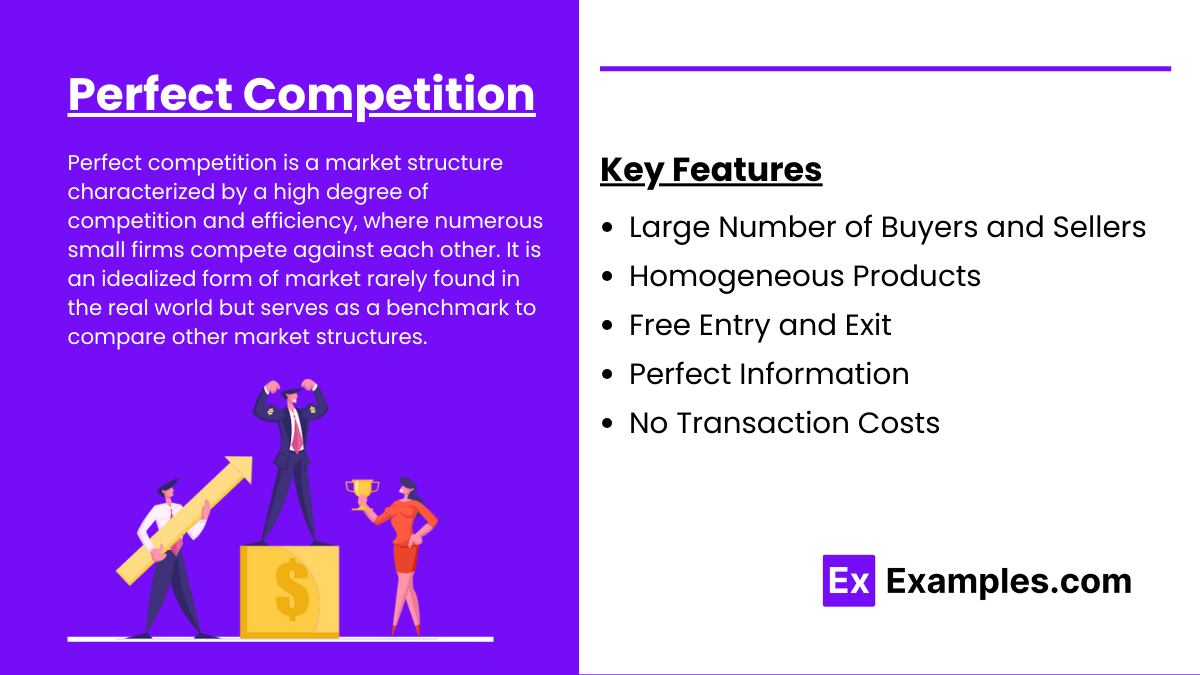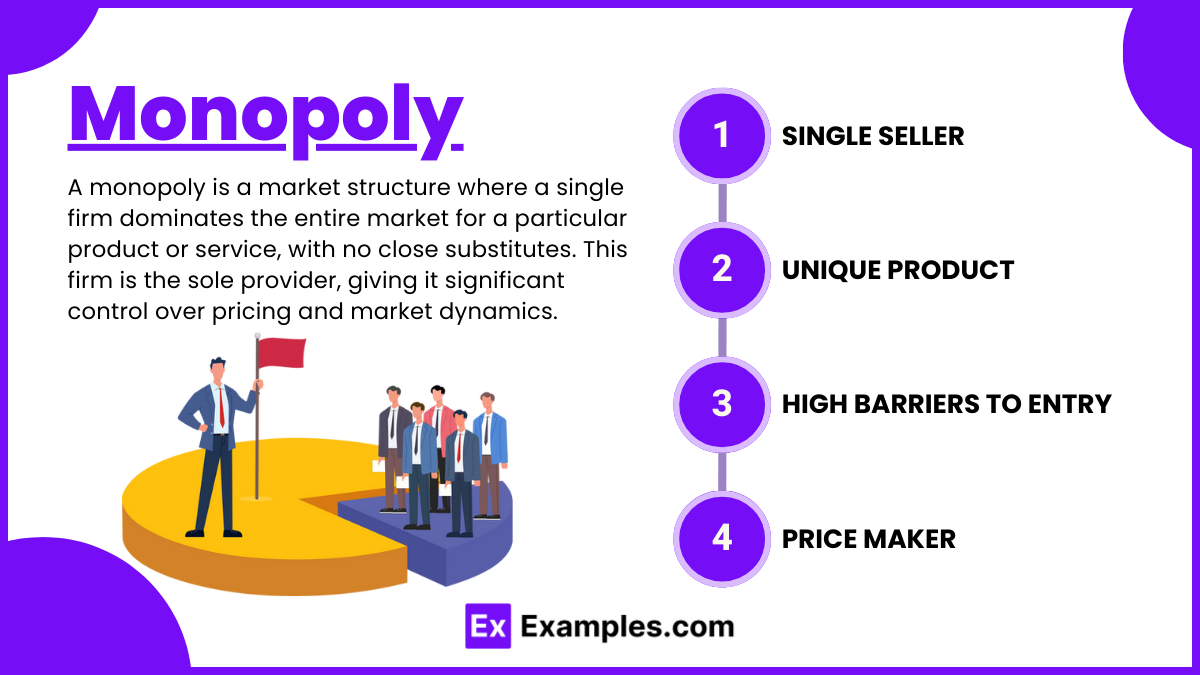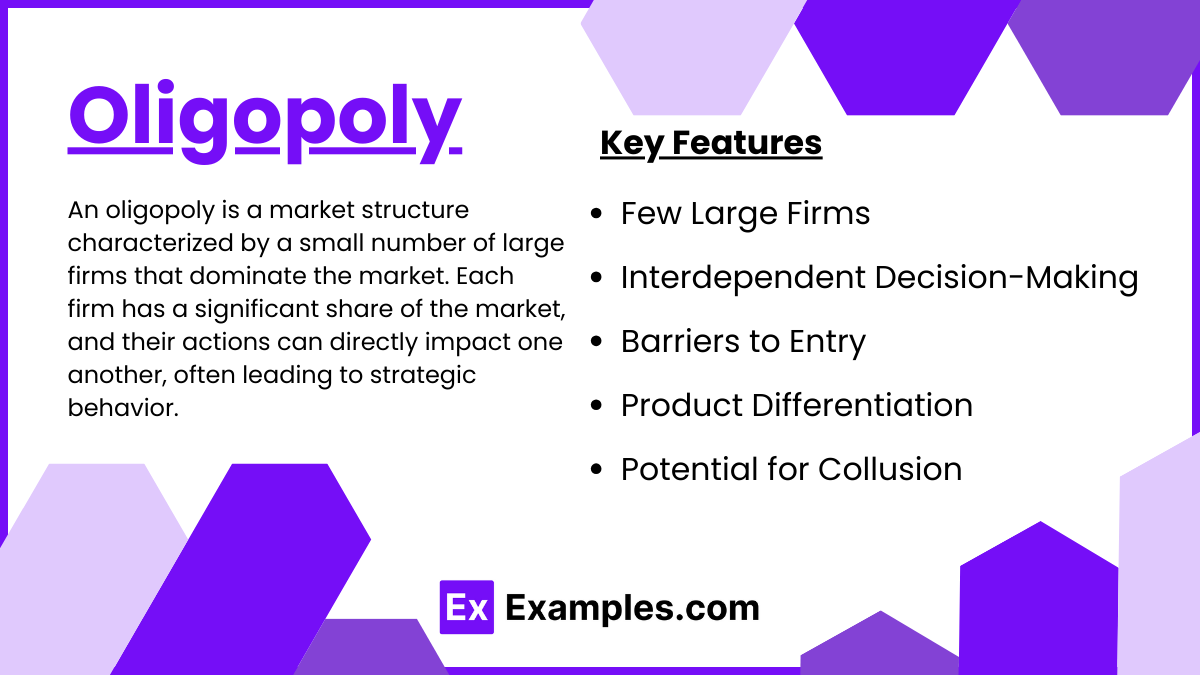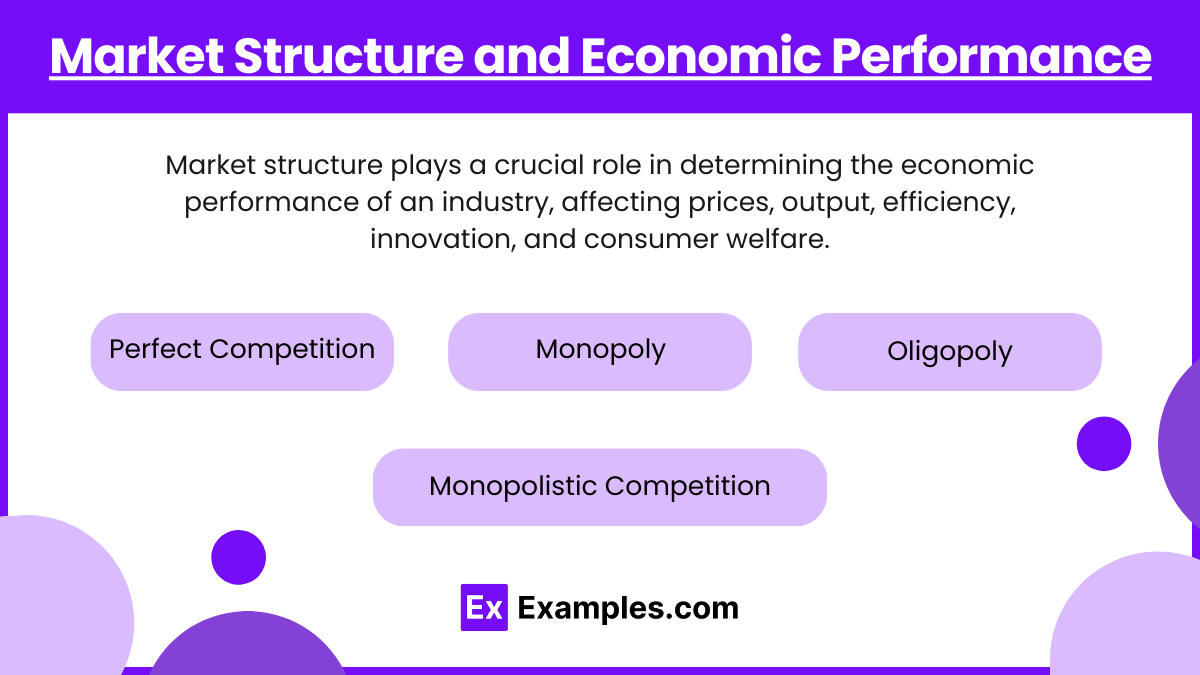Preparing for the CFA Exam requires a solid understanding of “The Firm & Market Structures,” a key concept in economics. Mastery of different market structures, firm behaviors, and competitive environments is essential. This knowledge provides insights into business strategy, market efficiency, and pricing power, crucial for achieving a high CFA score.
Learning Objective
In studying “The Firm & Market Structures” for the CFA Exam, you should aim to understand the characteristics and dynamics of various market structures including perfect competition, monopoly, monopolistic competition, and oligopoly. Analyze how these structures influence firm behavior, market power, and pricing strategies. Evaluate the implications of different market structures on economic efficiency and consumer welfare. Additionally, explore the role of regulatory frameworks in shaping market behavior and firm strategy. Apply this knowledge to assess market competition and predict outcomes in case studies and hypothetical market scenarios, enhancing your analytical skills for the CFA Exam.
Introduction to Market Structures

Market structure refers to the overall organization and behavior of price movements in financial markets, defining how prices trend, consolidate, and reverse. Understanding market structures is crucial for traders and analysts, as it helps them interpret price action, identify trading opportunities, and make informed decisions. Here’s an introduction to the key types of market structures:
1. Trending Markets
- Consistent directional movement—upward (uptrend) or downward (downtrend).
- Approach: Follow the trend (buy in uptrend, sell in downtrend) using trend-following indicators like moving averages.
2. Range-Bound Markets
- Prices fluctuate within a horizontal range, between support and resistance.
- Approach: Buy at support, sell at resistance, and watch for potential breakouts.
3. Reversal Patterns
- Signal potential trend changes, e.g., Head and Shoulders or Double Top/Bottom.
- Approach: Use these patterns to anticipate trend reversals and validate with volume and momentum indicators.
4. Breakout Structures
- Occur when prices break past support or resistance, potentially starting a new trend.
- Approach: Trade in the breakout direction, confirming with volume for strength.
5. Continuation Patterns
- Temporary pauses before the trend resumes, e.g., Flags or Pennants.
- Approach: Trade in the current trend direction once the pattern completes.
Perfect Competition

Perfect competition is a market structure characterized by a high degree of competition and efficiency, where numerous small firms compete against each other. It is an idealized form of market rarely found in the real world but serves as a benchmark to compare other market structures. Here are the key features and implications of perfect competition:
- Large Number of Buyers and Sellers
- The market has many participants, ensuring no single buyer or seller can influence the market price. Each participant is a price taker.
- Homogeneous Products
- All firms sell identical (homogeneous) products, making them perfectly substitutable. There are no brand preferences or differentiations.
- Free Entry and Exit
- Firms can freely enter or leave the market without any barriers, ensuring that profits and losses regulate the number of firms in the industry.
- Perfect Information
- All buyers and sellers have complete knowledge of prices, product quality, and production methods, enabling fully informed decisions.
- No Transaction Costs
- There are no costs associated with buying or selling products, facilitating easy and frictionless exchanges.
Monopoly

A monopoly is a market structure where a single firm dominates the entire market for a particular product or service, with no close substitutes. This firm is the sole provider, giving it significant control over pricing and market dynamics. Here are the main features and implications of a monopoly:
- Single Seller: Only one firm supplies the product, making it the sole market player with full control over supply.
- Unique Product: The product or service has no close substitutes, meaning consumers have no alternatives.
- High Barriers to Entry: Strong barriers prevent other firms from entering the market. These can include:
- Legal barriers, like patents or government regulations.
- Resource ownership, where the firm controls essential resources.
- Economies of scale, making it cost-prohibitive for new firms to compete.
- Price Maker: Unlike in competitive markets, a monopoly firm has the power to set prices since it faces no competition.
Oligopoly

An oligopoly is a market structure characterized by a small number of large firms that dominate the market. Each firm has a significant share of the market, and their actions can directly impact one another, often leading to strategic behavior. Here are the key features, implications, and dynamics of an oligopoly:
- Few Large Firms: Only a small number of firms control the majority of the market share, creating high market concentration.
- Interdependent Decision-Making: Each firm’s pricing, production, and marketing decisions are influenced by and impact the actions of competitors, leading to strategic behavior.
- Barriers to Entry: High barriers, such as economies of scale, access to resources, or substantial capital requirements, prevent new entrants from competing effectively.
- Product Differentiation: Products in an oligopoly may be homogeneous (like steel) or differentiated (like cars or airlines). Firms often compete on brand, quality, and other features.
- Potential for Collusion: Firms in an oligopoly may attempt to collaborate informally or formally to set prices and output levels, leading to a cartel-like behavior to maximize collective profits. However, collusion is illegal in most markets and strictly regulated.
Market Structure and Economic Performance

Market structure plays a crucial role in determining the economic performance of an industry, affecting prices, output, efficiency, innovation, and consumer welfare. Here’s how different market structures influence economic outcomes:
1. Perfect Competition
- Efficiency: High allocative and productive efficiency; prices reflect marginal costs.
- Consumer Welfare: Maximized due to low prices from intense competition.
- Innovation: Limited, as firms earn only normal profits.
- Overall: Optimal for pricing and resource allocation but lacks innovation incentives.
2. Monopoly
- Efficiency: Generally inefficient, with higher prices and reduced output.
- Consumer Welfare: Lower, as prices are high, and choices are limited.
- Innovation: Potentially high due to profits, though lack of competition may weaken incentives.
- Overall: Can exploit economies of scale but often faces regulation to prevent consumer harm.
3. Oligopoly
- Efficiency: Varies; can be inefficient with collusion but competitive if rivalry exists.
- Consumer Welfare: Mixed; prices are above competitive levels but lower than monopolies.
- Innovation: Often high due to profit margins, encouraging R&D.
- Overall: Balances efficiency and innovation but needs regulation to prevent collusion.
4. Monopolistic Competition
- Efficiency: Moderate; firms have pricing power but face competition.
- Consumer Welfare: High due to product variety, though prices are above marginal costs.
- Innovation: Moderate, with some incentives for product differentiation.
- Overall: Offers consumer variety and moderate efficiency but at a slight cost.
Examples
Example 1: Perfect Competition in Agriculture
- Analyze the agricultural sector as an example of perfect competition. Discuss how numerous small farmers contribute to an efficient market where no single producer can influence market prices, leading to an optimal allocation of resources according to consumer demand.
Example 2: Monopoly in Utilities
- Study the utilities industry, such as electricity and water, where natural monopolies exist due to high infrastructure costs and significant barriers to entry. Explore how regulatory bodies oversee pricing to prevent these monopolies from exploiting their market power at the expense of consumers.
Example 3: Monopolistic Competition in Fast Food Industry
- Examine the fast food industry as an example of monopolistic competition. Each firm differentiates itself through branding, product variations, and marketing. Discuss the implications of this market structure on pricing strategies and the role of advertising in maintaining competitive advantage.
Example 4: Oligopoly in the Automotive Industry
- Investigate the automotive industry, characterized by an oligopolistic structure where a few large firms dominate. Explore how strategic interactions, such as price setting and innovation, are influenced by the competitive behaviors of these major players.
Example 5: Tech Giants and Competitive Dynamics
- Analyze the market dynamics of major technology firms like Google, Apple, and Amazon, which demonstrate characteristics of both monopolistic competition and oligopoly. Discuss how these companies use strategic barriers, such as control over technology standards and ecosystems, to maintain their market power and influence over new entrants.
Practice Questions
Question 1
What characteristic is most typical of a perfectly competitive market?
A. Product differentiation
B. Limited number of buyers and sellers
C. Firms are price setters
D. Firms are price takers
Answer:
D. Firms are price takers
Explanation:
In a perfectly competitive market, there are many buyers and sellers, and each has a relatively small market share with no control over prices. Products are homogeneous, and firms must accept the market price, making them price takers.
Question 2
Which market structure is characterized by a few firms, significant barriers to entry, and potential for collusion?
A. Perfect competition
B. Monopoly
C. Monopolistic competition
D. Oligopoly
Answer:
D. Oligopoly
Explanation:
Oligopolies are markets dominated by a few large firms, often with significant barriers that prevent new entrants, thus limiting competition. The small number of firms makes it possible for them to collude, whether explicitly or implicitly, to control prices and market shares.
Question 3
In which market structure would you most likely find firms engaging in non-price competition?
A. Perfect competition
B. Monopoly
C. Monopolistic competition
D. Oligopoly
Answer:
C. Monopolistic competition
Explanation:
Monopolistic competition features many firms selling differentiated products, leading them to compete via non-price competition strategies such as advertising and product differentiation, rather than just competing on price. This market structure supports innovation and variety within sectors like retail and personal services.


